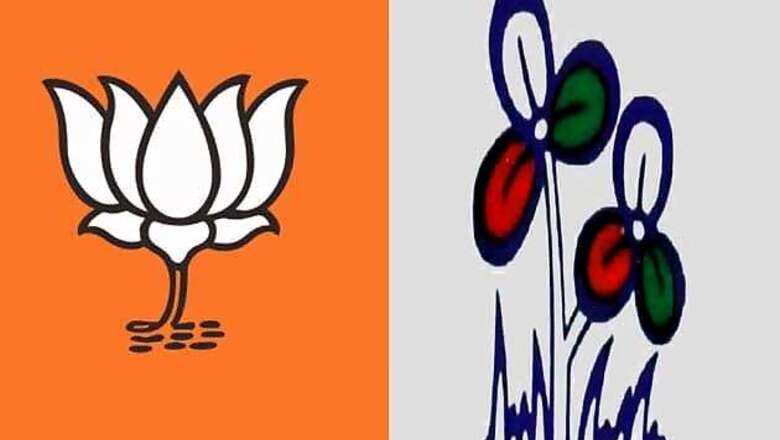
views
For any observer of Indian politics, 2014 has been a year of momentous change. Not only did the Lok Sabha elections change the party/alliance in power, in five of the seven states of the country, which had Assembly elections (save Odisha and Sikkim) the voters decided to replace the party in power.
A few days prior to the start of 2014, a new Aam Admi Party (AAP) government led by Arvid Kejriwal assumed office in the state of Delhi. In the early days of the New Year, the experiment that AAP represented was the key talking point in the streets of Delhi, in the corridors of power, on the pages of newspapers, in prime time television news shows and in academic circles.
AAP claimed it was a `party with a difference. Some watched with anticipation, others with skepticism as to what this difference represented. When the chief ministers and his ministers took to the streets to protest one wondered whether they understood the responsibilities of governance or thought they were still a party of protest that was naturally inclined to be in opposition! On the 49th day of being in power, Kejriwal resigned as chief minister and the short lived experiment of a "party with a difference" assuming power abruptly ended. It also signaled the beginning of the downslide in the popularity of the AAP.
As times progressed, the spotlight of political attention once again shifted back to the Lok Sabha elections. The incumbent UPA government was clearly tottering clueless, directionless and totally lacking in positive energy and enthusiasm. It was headed by a prime minister who already seemed to be in retirement mode, quietly awaiting the end of his second, five year term. He even announced his formal retirement and the Congress party went into the elections without any clarity on who would lead their government, if at all, they returned to power. The run up to the elections clearly indicated that the Congress appeared to have conceded defeat even before the start of the electoral battle.
Having declared its prime ,inisterial candidate, the BJP was rearing to go. Setting aside minor voices of internal dissent, the party saw the opportunity to return to power. It realised that by projecting the leadership factor, they would gain a decisive advantage over their opponents - partly on account of their leadership and more so on account of the absence of an effective leadership to challenge their leadership. A systematic, well planned and carefully choreographed election campaign focused clearly on the persona of their prime ministerial candidate Narendra Modi followed.
After a quarter of a century, the Indian voter gave a clear majority to a single party in the Lok Sabha poll. While the BJP victory was spectacular, the Congress defeat was equally devastating. The BJP achieved an extremely high strike rate in the states it was in power and had a significant political presence. This explains the fact that it secured a majority of the seats even as it got less than one-thirds of the valid votes polled, the lowest in Lok Sabha elections, for a party that secured a majority on its own. The rejection of the Congress party and the UPA government it led was across the country. It did not cross single digits in any state. It drew a blank in many critical states of the country and was unable to secure the minimum number of seats needed to claim the official status of the opposition in the Lok Sabha.
Three state based parties performed exceptionally well in their home states. The AIADMK in Tamil Nadu, the Biju Janata Dal in Odisha and the Trinamool Congress in West Bengal, won a majority of the seats in their states and challenged the rise of the BJP in East and South India. The TRS was able to do well in what later became Telangana and the TDP in alliance with the BJP was able to secure a majority in Andhra Pradesh. The Congress which held power in Andhra Pradesh had tried to claim credit for having created Telangana faced a near rout in what became Telangana and what was left of Andhra Pradesh.
What accounted for this result? In some ways this election was a clear vote of no confidence against the Congress-led UPA and its (non)performance. The BJP and its leadership was there at the right political moment to seize the opportunity and offer an alternative. If one looked at the profile of those who voted for the BJP in larger numbers it is clear that the younger, more affluent, more educated voters who had greater media exposure favoured the party in larger numbers. For the young, it was clearly an aspiration for a better tomorrow and the promise for change.
For the affluent and the more educated, the inability of the ruling regime to deliver and the effective manner in which the BJP and its leadership was able to present its agenda, decidedly titled the balance in its favour.
As the year come to an end the BJP-led NDA has been in power for just over seven months. Some would say the honeymoon period is still on. The decisive victories in Haryana and Jharkhand, the spectacular performance in Maharashtra and the creditable showing in the Jammu region of the J and K are a refection of the BJP sustaining the momentum built up by the Lok Sabha elections victory. The excellent communication skills of Prime Minister Narendra Modi have been a huge advantage to the BJP. After having come to power at the Centre, the BJP has strategically chosen the path of not projecting a chief ministerial candidate in the four Assembly elections. All these state polls have been fought by the party by projecting the Prime Minister's leadership.
Herein lies both a critical strength and a vital challenge. Critical strength, for the simple reason that the leadership of the Prime Minister allows them to carry the day. Vital challenge, on account of its long term implications for democratising institutions and processes.
The BJP state level leaders are today increasingly using the term High Command when referring to their Central leadership. Much like what the Congress did in the 1970s and 1980s, all victories are attributed to the Central leadership and this leadership plays a critical role in deciding on who should lead state governments.
Also, with every passing day, the BJP led NDA government is fast transforming itself into a BJP government. This has wider implications for coalition politics.
As the year comes to an end, the BJP could take comfort from the fact that the honeymoon period for their government is still on. This, however, cannot be expected to remain too long in the new year. What would now be significant is how much of the rhetoric one heard in the elections is translated into reality. A range of promises were made during and after the elections.
The electorate would now look for those promises being matched with performance. Increasingly across the country, the Congress party is slipping to the third or even fourth position. The principal contest appears to be between the BJP and an existing or emerging regional player.
One would keenly watch 2015 for any signs of action on the ground by the Congress party to revive its fortunes. Seven months out of power has not seen the party begin the journey of recovery from the stunning reverse it suffered at the polls.
2014 had a clear political message. Performance matters, non-performance will be severely punished. 2015 will be keenly watched for the Assembly polls in Delhi and Bihar. Will the BJP led government in Delhi be able to convert rhetoric into reality; promise into performance will decide and define the nature and structure of political competition in the New Year.
(Dr. Sandeep Shastri is a keen student of politics and the Pro Vice Chancellor of Jain University)




















Comments
0 comment